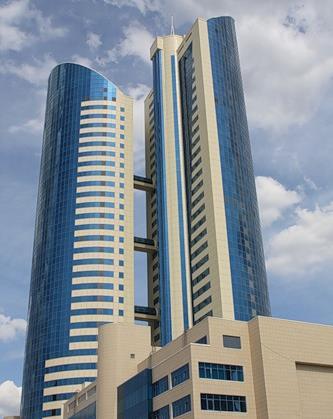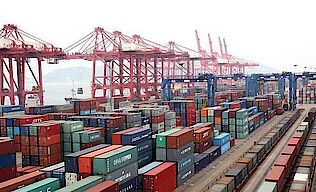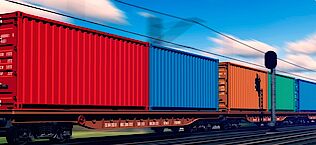JSC NC "Kazakhstan Temir Zholy"

JSC "Kazakhstan Temir Zholy" -national transport and logistics holding, operating terminal and main infrastructure of all modes of transport, is a National railway carrier of goods and passengers, carries out sea transportation.
In 2011, the Head of state of Kazakhstan N.Nazarbayev set the task to restore the role of the binding of Kazakhstan as a key link between Asia and Europe and the revival of the New silk Road.
As part of the implementation of the task JSC "Kazakhstan Temir Zholy" is actively working on the development of transport and logistics complex of the country.
For implementation, measures were taken to develop infrastructure, reduce physical and non-physical barriers related to border crossing.
Thus, since 2008, about 30 billion US dollars have been invested in the renewal of transport and logistics assets of Kazakhstan, 2.5 thousand new railway lines have been built, 6.3 thousand km of roads have been reconstructed, rolling stock has been updated, the capacity of border railway stations has been increased, terminal and port infrastructure has been developed.
The capacity of the logistics infrastructure at the Altynkol/Dostyk railway stations bordering China has been increased to 40 million tons.

Terminal at Lianyungang port

The base point in the formation of transcontinental service was the Kazakh-Chinese terminal in the port of Lianyungang, launched in 2014, equipped with modern infrastructure and equipment. Today, the terminal handles over 200 thousand TEUs, including import and export goods of Kazakhstan and countries of Central Asia.By 2020, the volume of transshipment will increase to 500 thousand TEU.
Network TLC

In order to ensure the growth of container traffic, we are forming a network of modern multifunctional transport and logistics centers, both inside and outside Kazakhstan. TLC was launched in Astana and Shymkent. This year it is planned to start the construction of TLC with customs clearance zone in Aktobe.
Port infrastructure in the Caspian Sea
The Caspian sea is a key element of multimodal transcontinental transport in the East-West and North-South directions. According to forecasts, the potential volume of cargo transportation on the TRANS-Caspian route from China to the Caucasus and Turkey is about 300 thousand TEU until 2020. As part of the expansion of the Aktau port in the Northern direction, 3 terminal facilities were put into operation. As a result, the capacity of the port was increased to 19.5 million tons per year, which allowed to increase the capacity for General cargo handling by 2 times (from 1.5 million tons to 3.0 million tons), grain - by 3 times (from 0.6 million tons to 2.1 million tons). A railway ferry terminal with a capacity of 4 million tons and a road crossing with a capacity of 2 million tons were put into operation in the port of Kuryk, which ensured the expansion of the port capacity of the Caspian to 25 million tons per year.
Container trains

High-quality transport and logistics infrastructure, competitive tariff rates, constant work on the elimination of non – physical barriers, customized approach to customers-all these factors ensure the competitiveness of the TRANS-Kazakhstan corridors and the growth of traffic volumes. In 2017 is expected to reach 200-fold increase in the volumes of transit transportation from China to Europe to the level of 2011.Sales are organized in 17 provinces of China, Vietnam, Korea, Europe and the Persian Gulf.
SEZ "Khorgos-Eastern gate»
All cargo flows from China to Europe and Central Asia are consolidated in the SEZ "Khorgos – Eastern gate" on the Eastern border with China.
In terms of its importance in the system of transcontinental multimodal transport Khorgos – East gate performs a strategic role similar to the Suez canal.
Consolidating trains in the port of Lianyungang and transporting them to the border, where the border railway stations Altynkol / Dostyk and Dry port in the territory of FEZ "Khorgos Eastern gate" are redistributed for further directions to the countries of Europe, the Eurasian Union, Central Asia, the Persian Gulf, the Caucasus/Turkey.
By 2020, the cargo flow through the SEZ "Khorgos-Eastern gate" is planned to increase to 10 million tons.





